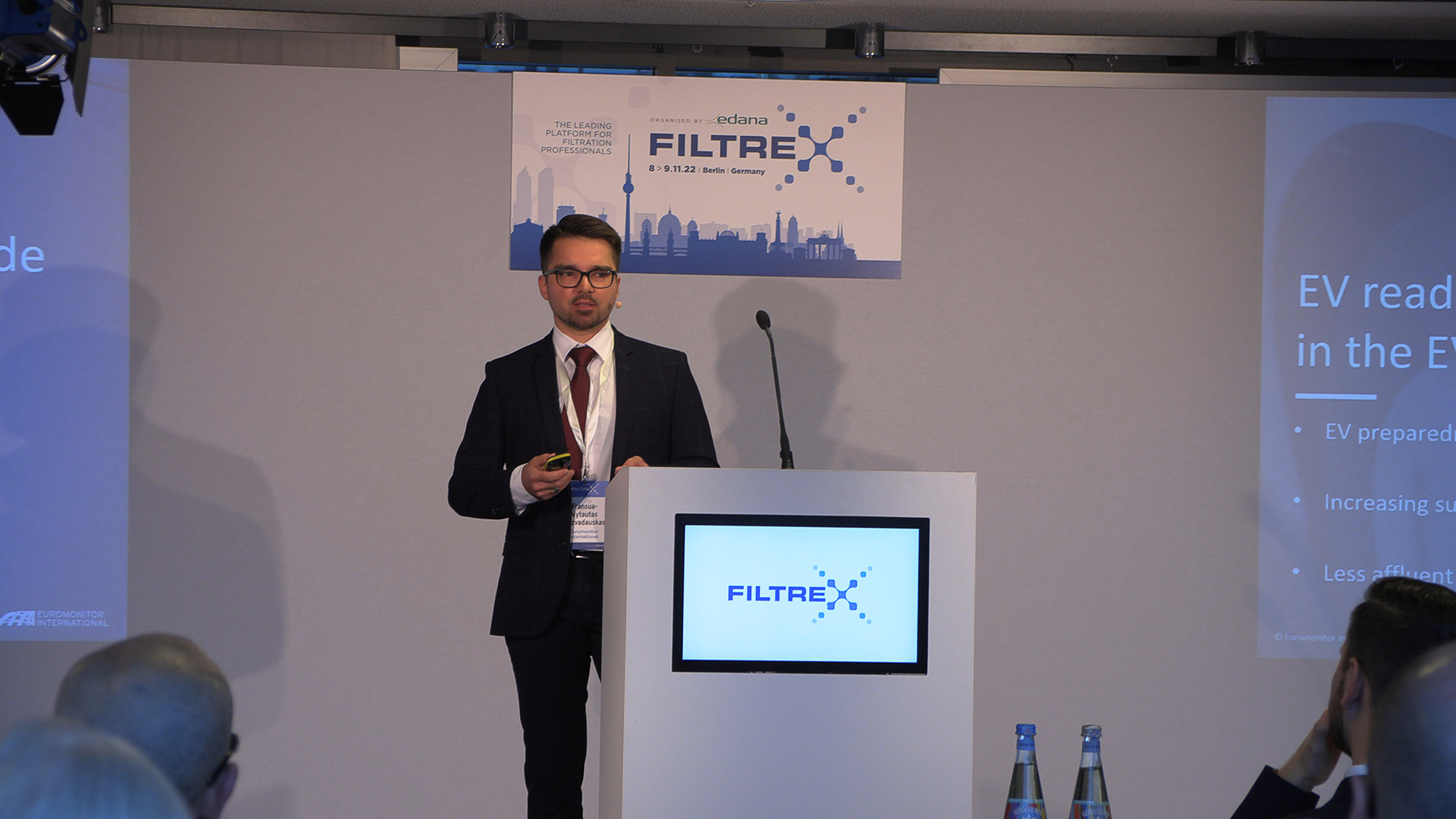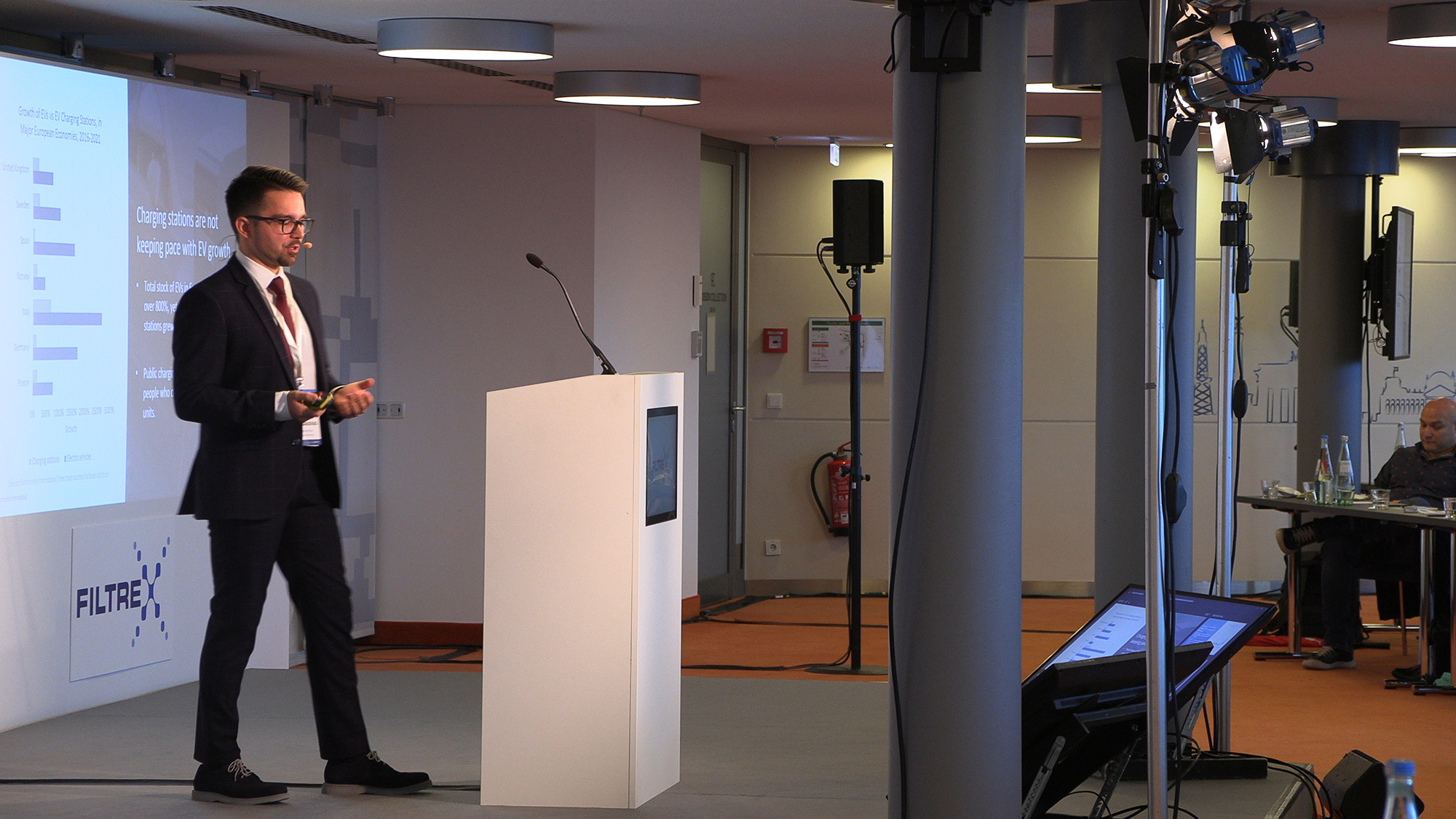Industry Insights FILTREX: Fransua Vytautas Razvadauskas


When we look at the market overview for electric vehicles, where are we today with the uptake, and where do you expect us to be?
Fransua Vytautas Razvadauskas (FVR): In 2021, around 10% of all global passenger car registrations were electric. When I talk about electric vehicles, I’m referring to battery and plug-in hybrid electric vehicles; this does not include non-plugin hybrid electric vehicles.
10% is pretty good considering around five years ago, this number was 0.5%. We can see a lot of growth in this industry, and we project that by 2031, more than 50% of all new passenger car registrations will be electric. We expect this to rise to 75% by 2040. It is indeed a fast-growing and dynamic industry.
How are government incentives and/or policies influencing the uptake, and how will that continue over the coming years?
FVR: What we are currently seeing is that governments are incentivizing consumers and businesses through various different means, whether that is from the tax perspective, for instance reducing corporate taxes for companies who buy electric vehicles, or by subsidizing the purchase of electric vehicles for consumers. But what we are also seeing is that these subsidies are being targeted more and more towards pure battery electric vehicles, given that sustainability is a big issue. The European Green Deal is pushing for more and more vehicles on our roads to be low emission, with the aim of reaching zero emission in the future, and plug-in hybrid electric vehicles can be run on an internal combustion engine, which still uses fossil fuels.
How much of the shift towards electric vehicles is driven by government incentives or is consumer behaviour – as people strive to be more environmentally friendly – also playing a role?
FVR: Government incentives are definitely playing a key role. As we’ve seen they are increasing the number of subsidies for pure electric vehicles, but we also expect to reach a certain tipping point for electric vehicles. When this happens, we expect that government incentives will gradually reduce and we hope that as supply increases, and the technology improves, the price point of electric vehicles will gradually reduce. This is also very much related to the EV battery, which accumulates the vast majority of the cost of electric vehicles, given that lithium and other raw materials are needed to produce batteries.
We know that electric vehicles are very expensive right now, and for many consumers, they are out of their price-range. Yet despite this and the energy crisis we are still seeing pretty decent levels of sales for electric vehicles. We don't know yet who’s buying these vehicles, we can only assume that these are very affluent consumers. But with the emergence of, for instance, China as a key market player in supplying electric vehicles, there could be another break in the industry that could help promote electric vehicles in the future.
What is the EV Readiness Index and how is it useful?
FVR: We created the electric vehicle – EV – Readiness Index to understand which countries are best suited to welcome electric vehicles, and which countries may need to further prioritize that sector. What we found, I guess unsurprisingly, was that essentially the most affluent economies tend to do best as they’re more able to consume such high-value, expensive products. Governments from these countries, are also more likely to have the means to expand the public charging station offering. And if that’s not possible, users can afford to simply buy their own private charging stations.
Norway, Austria, the Netherlands, were the top three economies in the EV readiness index, which comprises four pillars: market maturity, income and spending factors, infrastructure factors, and incentive factors. What really unites these three countries is that they performed well across all the pillars of the index. As economies which promote electric vehicles through various incentives, tend to perform a lot better in the EV readiness index, we saw a positive correlation in that respect.
Subsidies and incentives are one of the difficulties for emerging market and less affluent economies. These include Eastern European economies where, while there are some subsidies and incentives in place, they're not as generous as in more affluent countries. This means consumers are not really pushed to make the switch to electric vehicles. This is perhaps partly to do with the fact that some governments simply cannot afford to subsidize 4, 5, or 6,000 euros towards the purchase of an electric vehicle.
We can conclude from the EV Readiness Index that there is a divide between the countries that can buy electric vehicles, and those that can't which has an impact on sustainability goals. If we think about the Baltic countries, they're part of the European Union, but at the same time it will be more difficult for them to achieve some of the sustainability goals such as reducing carbon emissions from the transport sector, also because consumers are not as affluent as in other Member States and cannot afford to invest in more sustainable environmentally transport methods like electric vehicles.
It’s a challenge and a divide that we need to think about and address and that relates back to the price point of electric vehicles. We also need to ensure that consumers are not demonized for being unable to afford to transition to electric vehicles.